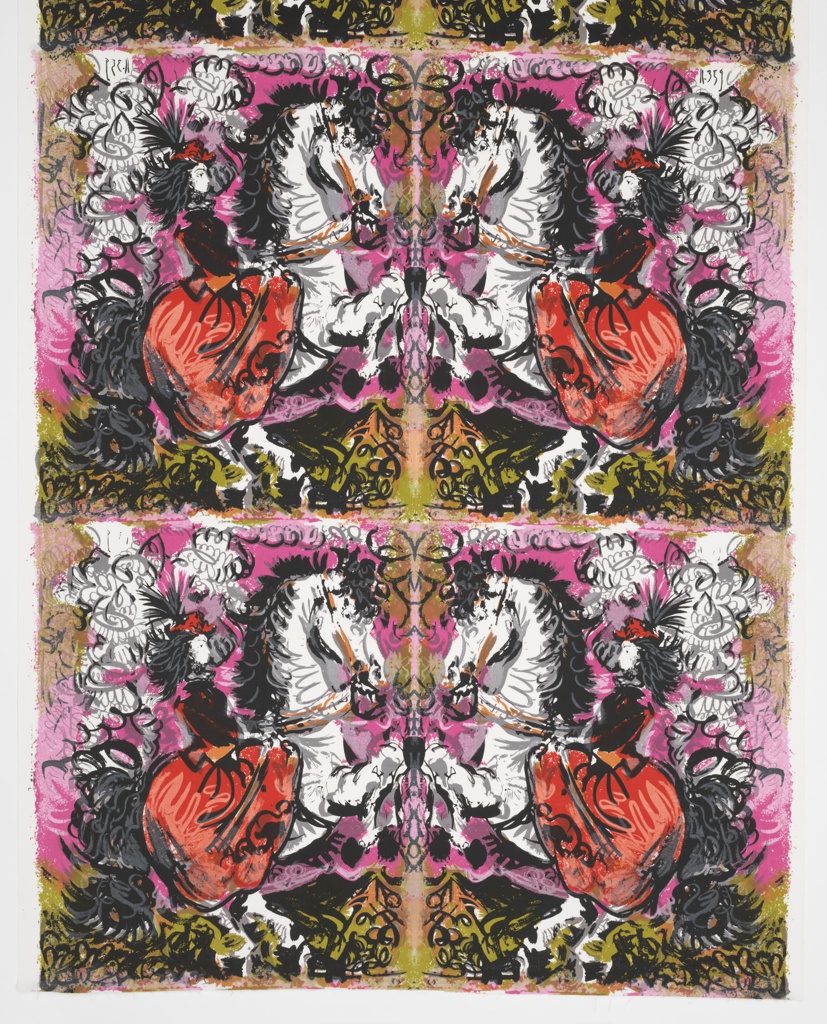Bloomcraft Fabrics, a New York-based producer of woven textiles that collaborated with artists ranging from Rockwell Kent to Gloria Vanderbilt, released the Picasso Collection in 1963. As announced by an advertisement in American Fabrics: “This unusual collection links the work of the world’s greatest living painter and the world of interior design through a series of eleven patterns, each of which reflects a phase of Picasso’s artistic evolution. Each fabric prominently carries Picasso’s signature.
“From a staggering number of paintings, gouaches, lithographs, pastels, wood blocks and pencil and ink drawings, Bloomcraft selected outstanding and varied works that would best lend themselves for use in decorative textiles. The motifs created by Picasso are carefully reproduced in scale and in the original colorings.” [1]
This design, entitled Carnet II, was based on a series of paintings and drawings Picasso made of his second wife, Jacqueline Roque. In its mirror-image repeat, a woman atop a rearing horse stoically confronts her own visage in a whirlwind of dust and smoke.
Carnet II and the other selected works were silkscreen-printed on a variety of materials and sold for about $5 per yard. Picasso, “the twentieth century’s leading avant-garde artist, lifelong sympathizer of socialist ideals, and a fully paid up member of the French Communist Party” who “was certainly in need of neither money nor publicity” [2] was delighted to have his work featured on inexpensive, mass-produced textiles made for ordinary people.
Buyers weren’t meant to get too comfortable, though. The artist is said to have declared the fabrics fit for “every form of interior decoration, except upholstery. By the maestro’s wishes, Picassos may be leaned against, not sat on.”[3]
The museum currently holds six textiles from Picasso’s earlier collaboration with Fuller Fabrics, the Modern Masters Series. Carnet II would be the first of his Bloomcraft designs.
Rachel Ward Sepielli is a graduate of the History of Design and Curatorial Studies program at the Cooper Hewitt, and was a Curatorial Fellow in the Textiles Department.
[1] American Fabrics 58 (Fall 1962): 76.
[2] Geoffrey Rayner, Richard Chamberlain, and Annamarie Stapleton, Artists’ Textiles 1940-1976 (Woodbridge: Antique Collectors’ Club, 2012), 248.
[3] Ibid, 250.
